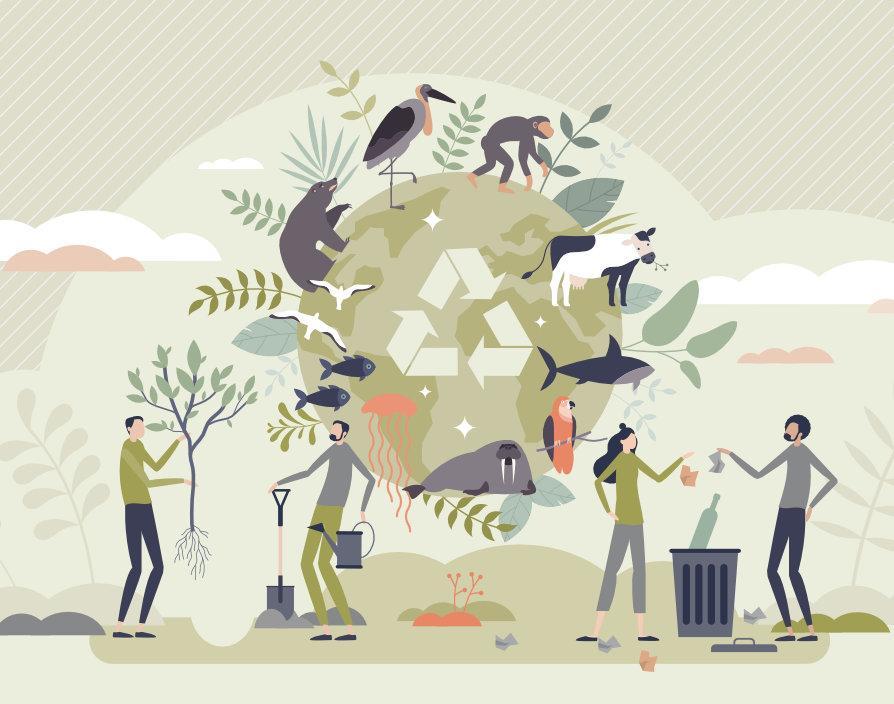I’m afraid I need to introduce yet another business worry. Alongside meeting sustainability goals, being inclusive and tackling inflationary pressures you also need to tackle biodiversity. 60% of our wildlife has disappeared since 1970 and we need to do something about it.
I was recently at The Economist’s Sustainability Week conference attended by the great and good from the world of business, government and NGOs. There was talk of net zero targets, the need for good data and copious funding, and collaboration alongside competition, but the rumbling undercurrent through all of it all was biodiversity.
We’ve all listened to David Attenborough, we know it’s very serious, but what’s it to do with my business? How do I interact with nature?
Companies are being asked to look at their impact on the biodiversity, which is obvious for companies connected to agriculture, but many will regard theirs’s as negligible. This may be logically true but, as someone said at the conference, what employee of yours would want to live in a world depleted of biodiversity. Biodiversity is fundamental to our health, happiness, nutrition, wellbeing, our very existence. We can’t do without it. We are animals too and part of the system. Perhaps too bigger part of the system.
If we don’t have meadows, we don’t have flowers, if we don’t have flowers, we don’t have insects, and if we don’t have insects, we don’t have pollination, and if we don’t have pollination, we don’t have crops, and if we don’t have crops, we don’t have food and we starve!
At the core of the discussion is agriculture. The development and adoption of regenerative methods goes some way to tackling the issues of farming in the natural environment, alongside its potential to reduce and even sequest carbon. However, the main concern is that there is so little wildlife left.
Frightening and depressing fact: the biomass (kilos of flesh and bone if you will) of wild animals globally is only 2%.
34% is not surprisingly humans, and, worryingly, 35% is cattle – no wonder we worry about their methane contribution to global warming. We have stripped away so much of our natural world it is clinging on by its toenails, so preserving it is just not enough, we need to be biodiversity positive.
Every corporation, business, government and organisation needs to find way a way to build back our natural world. Every CSR directive needs to include, not just an impact lowering plan, but a positive biodiversity plan. Planting trees is a start but done in the right way with a diversity of species and habitats. We need to reinstate out rivers, meadows, and hedgerows in a way that encourages wildlife. It’s not just down to the farmers, we all need to take responsibility. English Heritage re-introducing meadows at all their sites is an example, brands sponsoring endangered wildlife is another, but they are easy no-brainers. English Heritage sites will look all the more beautiful for their actions, cute pictures of pandas in brand communications will always be a consumer draw. What about the bugs and beetles in stacks of messy deadwood, the beavers that are essential to natural waterway management? It’s not all pretty and simple to communicate.
However, it does feel like it can be tackled at every level, and it can be incremental and cumulative – everyone can do or support something. Yes it is the big tasks like Unilever moving away from unsustainable palm oil that is threatening the very existence of orangutangs, but it is also the small things like putting back a hedgerow. If homeowners, communities and farms got involved we could build the network of natural corridors through our sterile human world that would help nature connect, rebuild and even thrive.
Technology, as usual, lends a hand. At one conference I attended an example was given of how aerial surveillance and mapping of field crops was not only facilitating the accurate application of fertilisers but was also isolated unproductive sections of fields. This waste land can then be designated as landing pads for sky larks which are in steep decline (75% between 1972 and 1996).One reason for the decline isthat they can’t find their nests in modern dense field crops. This way they can alight on these landing pads and weave their way through the stalks to find their nests. A win for productivity and nature.
What can you do? Look at your premises – how about a green roof or rewilding the front lawn. Can you support, through your branding and communications, organisations like the WWF, or more local outfits like Mossy Earth who are rewilding our rivers. Using the power of your consumer base to aggregate the effect. Galvanise your staff into action by giving them and their families the remit and tools to contribute and collaborate. Don’t worry about the wider world just yet, work with local schools and communities to tackle your immediate environment first. Afterall if we all did a bit the changes would join up and the effect would be staggering.
I would love to see a cloud of summer butterflies in my lifetime, like my father would have done in his youth – wouldn’t you? Nature has a way of healing itself, we just need to give it a chance.
Share via:









































